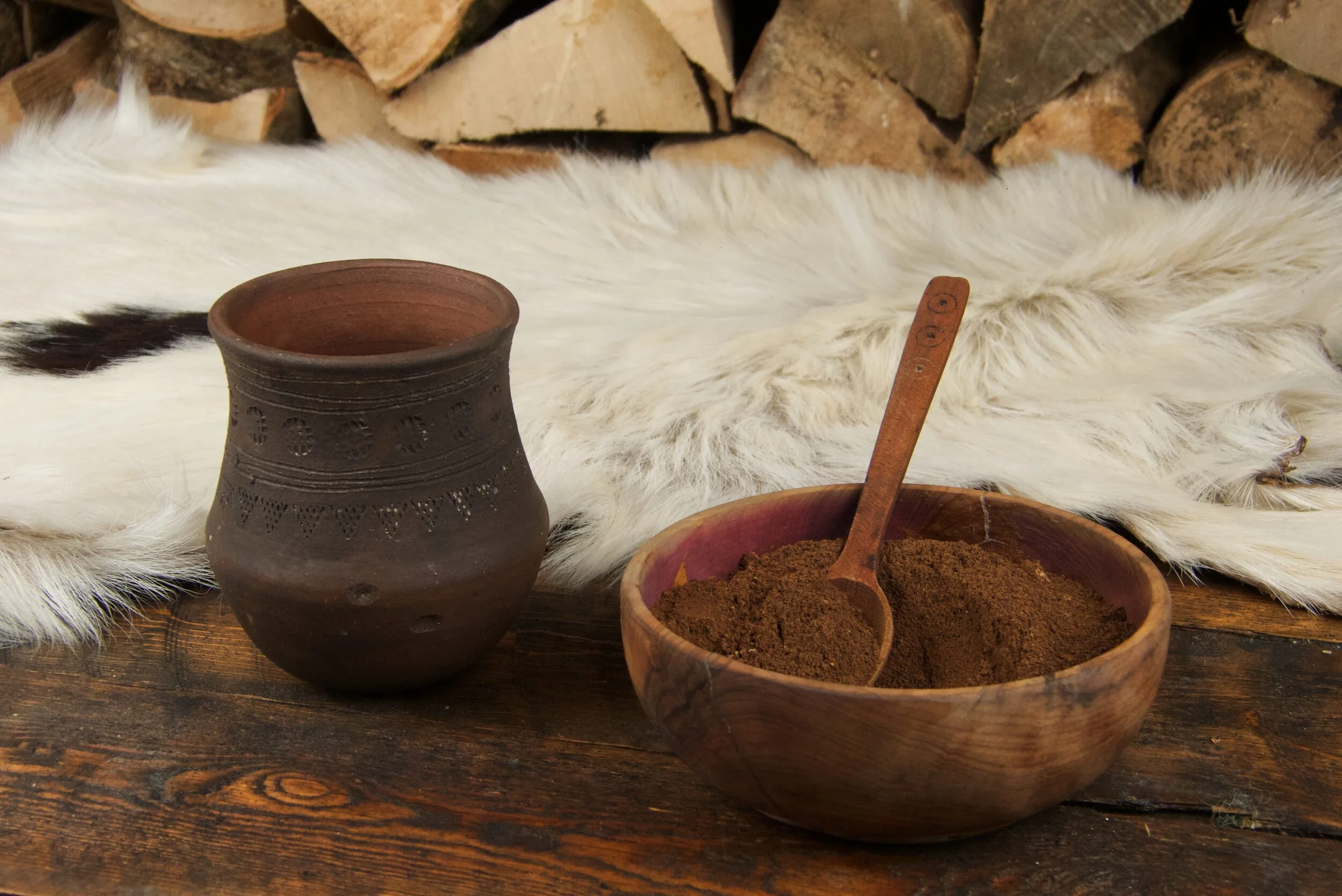While also used to fatten up pigs, acorns can also be eaten by people. Charred acorns have been found on the floor of a Saxon hut, suggesting maybe that they were eaten much like chestnuts.
To make flour;
Shell the acorns, I find this easier after leaving them to dry for a day or two. Roughly chop the acorns, or, if you are in a modern Kitchen, run them through a food processor.
Cover the acorns with cold water, and leave to soak for 3-5 days, changing the water at least twice a day to remove most of the tannins.
Drain and dry the acorns, either naturally, or in an oven at 80 degrees Celsius, leaving the door slightly open.
Grind the acorns between quern stones, or, in a modern Kitchen use a food processor or coffee grinder, grinding as finely as you require.
The resulting meal/flour can be used as required in breads, pancakes, crumpets etc. It will make a denser loaf than normal bread flour, so I’d recommend using a mix of bread flour and acorn.
Using a similar method it is also possible to turn other foods, such as hazelnuts and broad beans, into meal/flour.






